These high altitude tested, homemade beignets are light and airy, flavored with vanilla, nutmeg and fresh orange zest, fried until golden brown and covered in powdered sugar. This recipe uses an easy yeast dough that comes together quickly and chills overnight, so you can fry your beignets the next morning for a delicious, New Orleans style treat that everyone will love.
You might also love these old fashioned sour cream cake doughnuts, basic yeast doughnuts, and chocolate cream filled doughnuts with espresso sugar.
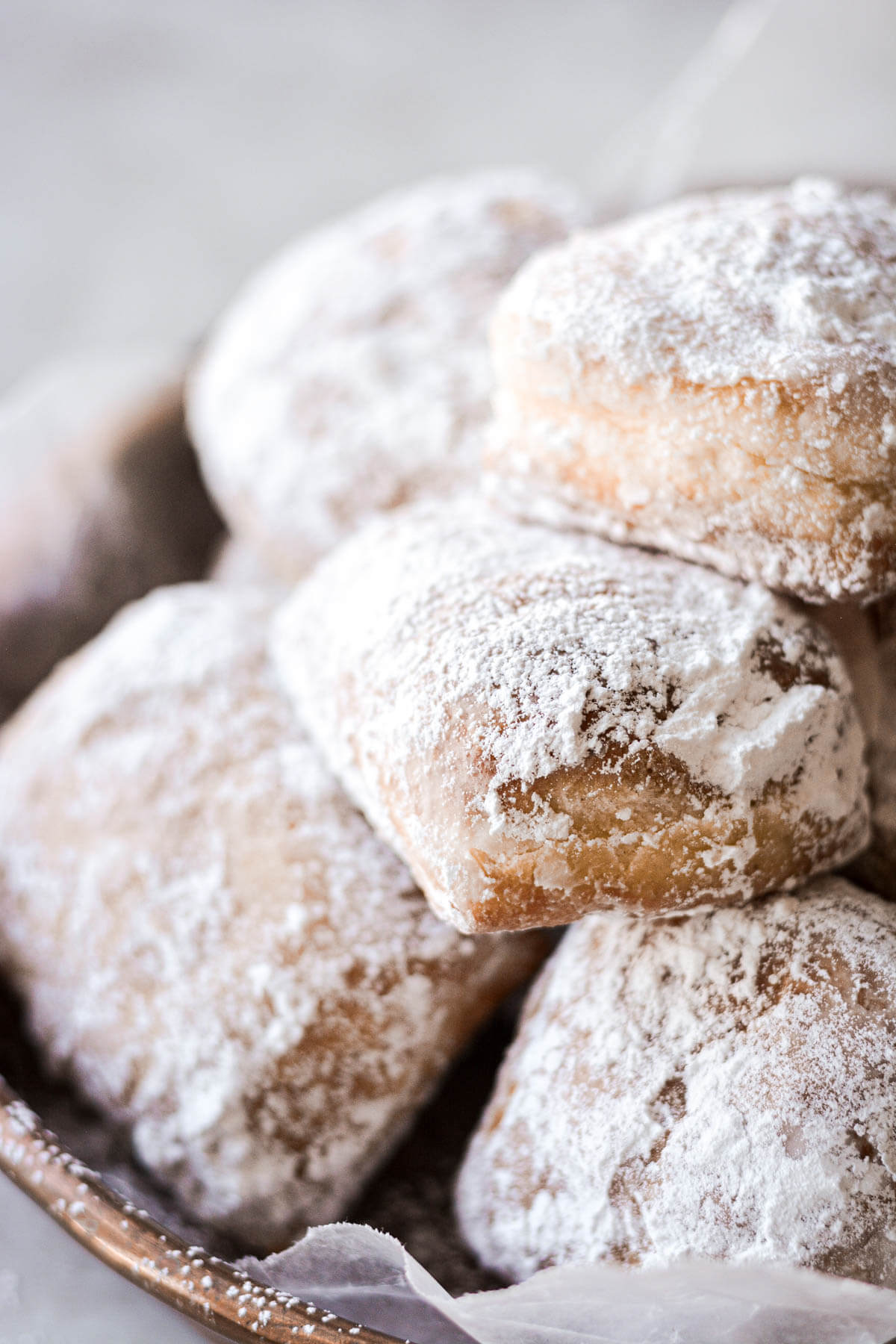
This site contains affiliate links. As an Amazon associate, I earn from qualifying purchases. This means that I may make a small commission if you purchase a product using those links. This in no way affects my opinion of those products and services. All opinions expressed on this site are my own.
What are Beignets?
A beignet is a type of fritter, doughnut or deep fried French pastry that’s popular in the south, particularly in New Orleans. You can use either pâte à choux (choux pastry) or yeast dough to make beignets, and I’ve made mine with a simple yeast dough.
The dough is typically cut into squares, fried until golden brown and pillowy, then covered generously with powdered sugar. Beignets are not nearly as dense as donuts, and since they puff up dramatically in the hot oil, one of their characteristics is a large air pocket inside, which you could even fill with jam, cream, custard or ice cream. They’re crispy and chewy (rather than fluffy like a twice-raised donut), and are best enjoyed immediately after frying, alongside a cup of hot coffee.
Why You’ll Love This Recipe
Light and Crisp. If fried correctly, beignets are not heavy or greasy, but so light, airy and crisp, so you could easily eat 3-4 of them without feeling full.
Easy to Make Dough. Even if you’ve never worked with yeast before, you’ll find this recipe easy to make with either a stand mixer or by hand.
Full of Flavor. A common complaint about beignets is that they tend to be bland and flavorless without tons of powdered sugar. Mine are anything but tasteless with vanilla extract, ground nutmeg and a hint of fresh orange zest in the dough.
High Altitude Tested. I develop all the recipes on my site for Denver’s altitude of 5,280 feet. If you’re at a lower or higher elevation, please see my FAQs for guidance on adjusting recipes for your altitude.

See the recipe card at the end of the post for the full ingredients list and instructions.
Ingredients and Equipment
- Flour. I recommend using a high protein bread flour, which contributes to the chewy texture.
- Sugar. Granulated sugar adds a touch of sweetness and helps to activate the yeast.
- Yeast. I used instant yeast, which can be mixed right into the dough, with no need to proof it first. See the FAQs section below for using active dry yeast.
- Salt. Balances the sweetness and adds flavor.
- Spices. Vanilla extract and ground nutmeg adds depth of flavor. You could also use ground cardamom instead of the nutmeg, although I would use half as much cardamom, since the flavor is strong. Fresh orange zest also adds brightness and more flavor, that you’ll just love.
- Water + Milk. Adds moisture to the dough and a little fat from the milk, for more flavor.
- Shortening. The vegetable shortening creates flaky layers in the dough, which helps it to puff up in the hot oil. You could use butter instead, but you likely won’t get the same result.
- Egg. Adds moisture, fat and structure to the dough.
- Oil. Use a neutral tasting vegetable oil, for frying.
- Powdered Sugar. This is the finishing touch for the beignets.
- Saucepan. For frying, I use a pan that’s about 10-12 inches in diameter with a depth of 4-5 inches.
- Thermometer. A candy thermometer clipped to the side of the pan is essential for monitoring the oil temperature.
- You’ll also need a rolling pin, rolling pastry wheel cutter or pizza cutter, and a strainer or kitchen spider. A stand mixer with a paddle attachment is helpful for mixing the dough, but not essential.

Instructions
Make the Dough
- In the bowl of your stand mixer, measure the flour, granulated sugar, yeast, salt, nutmeg and orange zest.
- In the microwave or on the stove, warm the water and milk until it reaches between 110-115 degrees Fahrenheit. Stir the shortening into the hot liquid, to help it soften and melt a little.
- Add the water, milk, shortening, egg and vanilla extract to the flour mixture. Using the paddle attachment, mix the dough on medium speed for about 2 minutes, until smooth.



Rise and Chill the Dough
- Scrape the dough into a lightly greased bowl that’s at least twice as big as the dough. Cover the bowl tightly with plastic wrap.
- Set the bowl in a warm place (such as inside your oven using the “bread proof” setting), and let rise until doubled in size, about 45-60 minutes.
- Set the bowl in the refrigerator and chill the dough for at least 2 hours, or overnight. I find it easiest to let the dough chill overnight, then fry the beignets in the morning.


Fry the Beignets
- Pour the oil into a large, heavy bottomed sauce pan. I use a pan that’s about 10-12 inches in diameter with a depth of 4-5 inches. Clip a candy thermometer to the side of the pan so the tip is submerged in the oil. Over medium to medium low heat, steadily heat the oil to between 360-365F.
- Meanwhile, scrape the cold dough out onto a lightly floured surface. Flour the top of the dough, and gently press the air out. Roll the dough out into a rectangle measuring 12×15 inches and about 1/4 inch thick. Use a pizza cutter or a rolling pastry wheel cutter to cut the dough into 20 squares measuring 3×3 inches. Separate the squares so they’re not touching while you wait for the oil to heat.
- Line a baking sheet with several layers of paper towels.
- When the oil is hot, fry the beignets in batches of 4 at a time, so the pan isn’t crowded. When you drop the dough into the hot oil, they will float on top and puff up. Fry them for 1-2 minutes until the bottom is golden brown, then flip them and fry the other side for another minute or so until golden brown. Use a strainer to remove the beignets from the oil, and set them on the paper towels to soak up any excess oil. The white ring around the sides is characteristic of a well-fried doughnut, since the light, airy dough should float on top of the oil, and not remain submerged.
Note: Watch the temperature of your oil and adjust the heat of the burner as needed. When deep frying, it’s important to carefully maintain the temperature of your oil. If it gets too hot, your beignets will burn on the outside and remain raw inside. If it’s too cold, the beignets will stay flat instead of puffing up, absorb too much oil, and become heavy and greasy rather than light and crispy. You can expect the temperature to drop by 5-10 degrees when you drop the dough in, but it should recover quickly.




Finish with Powdered Sugar
- Coat the hot beignets in the powdered sugar, or just use a sifter to sift the sugar over the top of them. Serve immediately.
- Beignets are known for having a large air pocket inside, which you can also fill with jam, custard, or whipped cream. If filling the beignets, do this before adding the powdered sugar.

Be sure to read all of my BAKING FAQs where I discuss ingredients, substitutions and common baking questions, so that you can be successful in your own baking!
Frequently Asked Questions
Are beignets still good leftover?
Beignets are not great leftover, and will not keep until the next day. They are best eaten immediately after frying.
Can beignets be filled?
Yes! With the large air pocket inside, you can fill them with jam, cream, custard, Nutella, lemon curd, apple butter or even ice cream.
Will all-purpose flour work instead of bread flour?
I prefer using high protein bread flour, as it contributes to the chewy texture. You can use all-purpose flour, too, though.
Can I use active dry yeast instead of instant yeast?
My favorite yeast is Red Star Platinum Premium Instant Yeast with Dough Enhancers, and I highly recommend buying it if you are looking for beautiful results in your breads, doughnuts and cinnamon rolls. With instant yeast, you don’t have to proof or activate the yeast first, you can simply mix it right in with the rest of the ingredients.
If you use active dry yeast, you need to proof or activate it first. After warming the water and milk to 115F, add a teaspoon of the granulated sugar to the warm liquid, then stir in the yeast. Wait 5-10 minutes until it’s foamy and bubbly, then add it to the flour mixture and proceed with mixing the dough as instructed.
What if I don’t have a stand mixer?
If you don’t have a stand mixer, you can beat the dough by hand with a Danish dough whisk or just with a wooden spoon, for several minutes until it’s nice and smooth.
Why didn’t my beignets puff up?
It’s likely that your oil was too cold, or the temperature dropped too much when you added the dough to the oil. Watch the temperature of your oil and adjust the heat of the burner as needed. When deep frying, it’s important to carefully maintain the temperature of your oil. If it gets too hot, your beignets will burn on the outside and remain raw inside. If it’s too cold, the beignets will stay flat instead of puffing up, absorb too much oil, and become heavy and greasy rather than light and crispy. You can expect the temperature to drop by 5-10 degrees when you drop the dough in, but it should recover quickly.

You Might Also Like
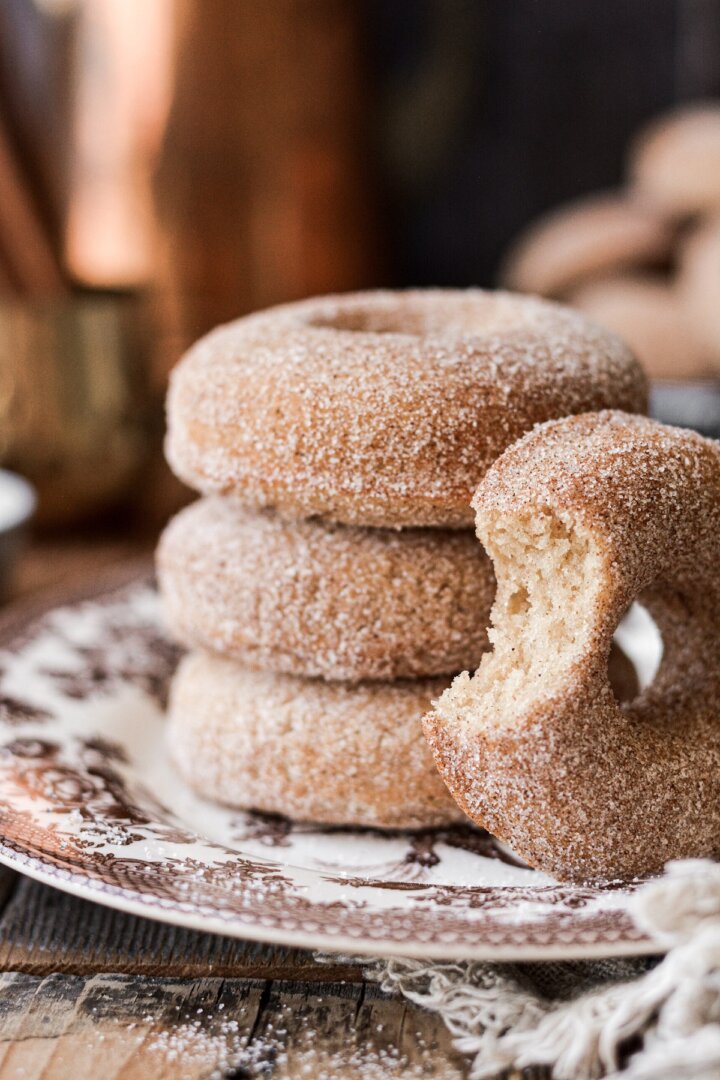
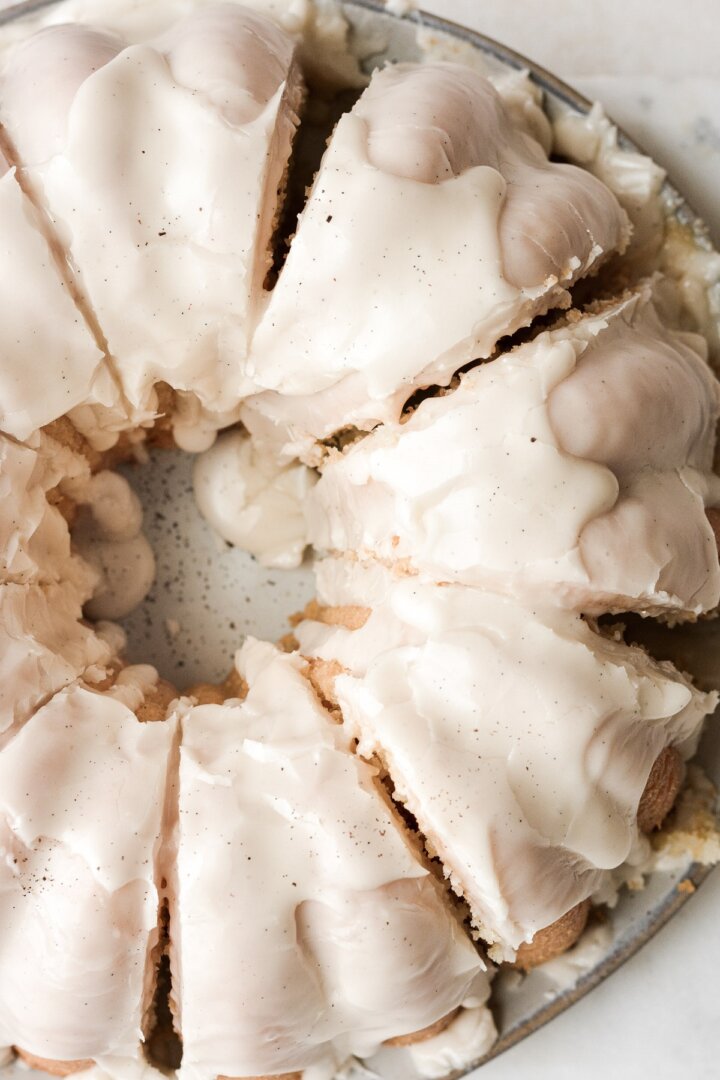
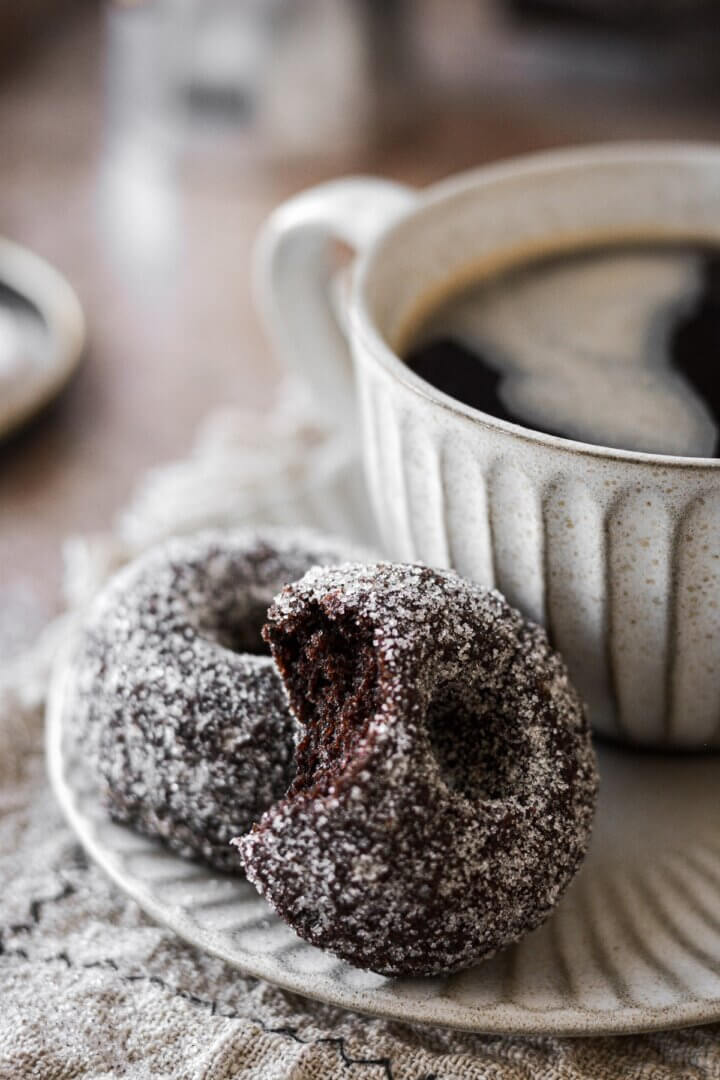
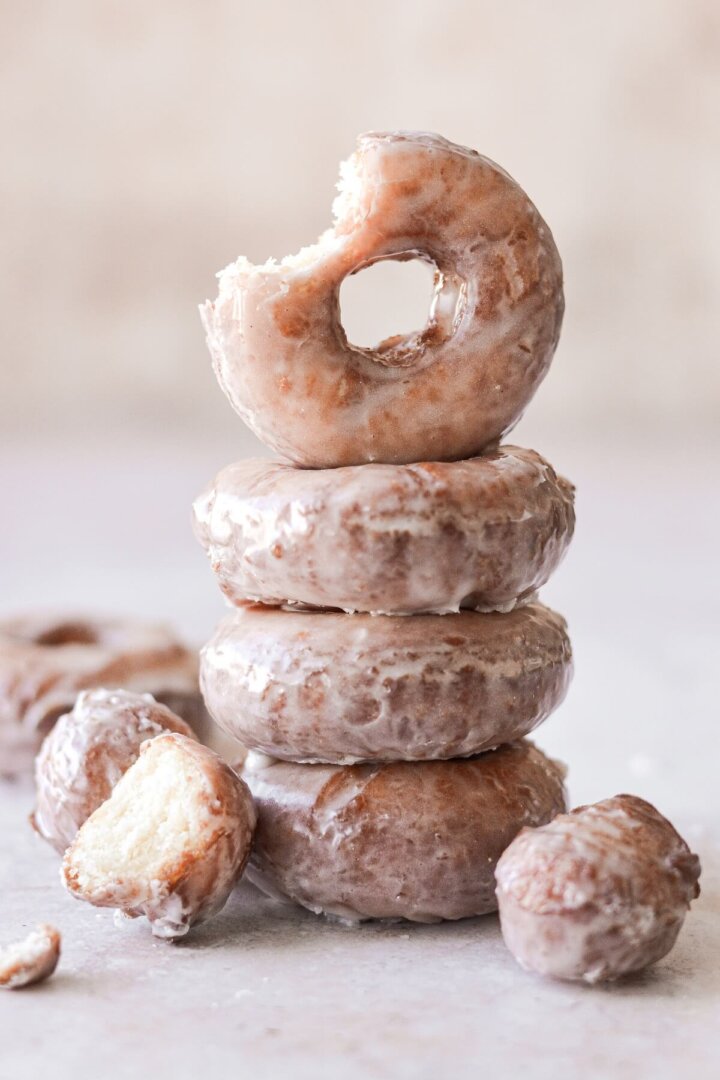
Please check out my Amazon Shop for a curated collection of some of my favorite cake pans from trusted brands, baking tools, ingredients, pretty things and fashion finds. I recommend products that I buy and use every day!
Did you love today’s recipe? Please rate the recipe and let me know in the comments what you thought! Also, be sure to follow Curly Girl Kitchen on Instagram, and tag me when you try one of my recipes so I can see all your delicious creations!
High Altitude Beignets
All recipes on Curly Girl Kitchen are developed for high altitude at 5,280 feet. See FAQs for adjusting to higher or lower elevations.
Equipment
- Stand Mixer with Paddle Attachment
- Large Heavy Bottomed Saucepan (for deep frying)
Ingredients
- 2 ¾ cups bread flour, fluffed, spooned and leveled
- 2 tbsp granulated sugar
- 1 tsp instant yeast
- ½ tsp coarse Kosher salt (if using table salt, use half the amount)
- ¼ tsp ground nutmeg
- ½ tsp freshly grated orange zest
- ½ cup water
- ½ cup whole milk
- 2 tbsp vegetable shortening
- 1 large egg, room temperature
- 1 tsp vanilla extract
- 1 qt vegetable oil, for frying
- 1 cup powdered sugar
Instructions
Make the Dough
- In the bowl of your stand mixer, measure the flour, granulated sugar, yeast, salt, nutmeg and orange zest.
- In the microwave or on the stove, warm the water and milk until it reaches between 110-115 degrees Fahrenheit. Stir the shortening into the hot liquid, to help it soften and melt a little.
- Add the water, milk, shortening, egg and vanilla extract to the flour mixture. Using the paddle attachment, mix the dough on medium speed for about 2 minutes, until smooth.
Rise and Chill the Dough
- Scrape the dough into a lightly greased bowl that's at least twice as big as the dough. Cover the bowl tightly with plastic wrap.
- Set the bowl in a warm place (such as inside your oven using the "bread proof" setting), and let rise until doubled in size, about 45-60 minutes.
- Set the bowl in the refrigerator and chill the dough for at least 2 hours, or overnight. I find it easiest to let the dough chill overnight, then fry the beignets in the morning.
Fry the Beignets
- Pour the oil into a large, heavy bottomed sauce pan. I use a pan that's about 10-12 inches in diameter with a depth of 4-5 inches. Clip a candy thermometer to the side of the pan so the tip is submerged in the oil. Over medium to medium low heat, steadily heat the oil to between 360-365F.
- Meanwhile, scrape the cold dough out onto a lightly floured surface. Flour the top of the dough, and gently press the air out. Roll the dough out into a rectangle measuring 12×15 inches and about 1/4 inch thick. Use a pizza cutter or a rolling pastry wheel cutter to cut the dough into 20 squares measuring 3×3 inches. Separate the squares so they're not touching while you wait for the oil to heat.
- Line a baking sheet with several layers of paper towels.
- When the oil is hot, fry the beignets in batches of 4 at a time, so the pan isn't crowded. When you drop the dough into the hot oil, they will float on top and puff up. Fry them for 1-2 minutes until the bottom is golden brown, then flip them and fry the other side for another minute or so until golden brown. Use a strainer to remove the beignets from the oil, and set them on the paper towels to soak up any excess oil. The white ring around the sides is characteristic of a well-fried doughnut, since the light, airy dough should float on top of the oil, and not remain submerged.
- Watch the temperature of your oil and adjust the heat of the burner as needed. When deep frying, it's important to carefully maintain the temperature of your oil. If it gets too hot, your beignets will burn on the outside and remain raw inside. If it's too cold, the beignets will stay flat instead of puffing up, absorb too much oil, and become heavy and greasy rather than light and crispy. You can expect the temperature to drop by 5-10 degrees when you drop the dough in, but it should recover quickly.
Finish with Powdered Sugar
- Coat the hot beignets in the powdered sugar, or just use a sifter to sift the sugar over the top of them. Serve immediately.
- Beignets are known for having a large air pocket inside, which you can also fill with jam, custard, or whipped cream. If filling the beignets, do this before adding the powdered sugar.


Leave a Reply